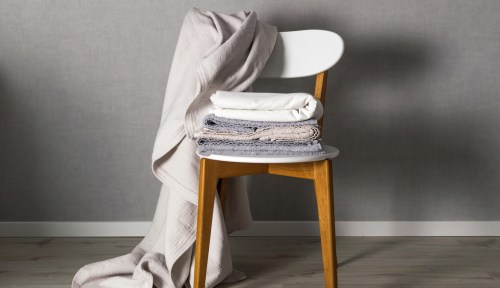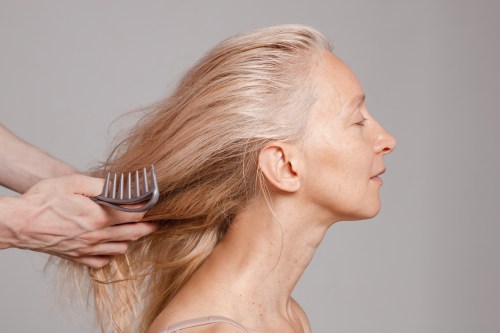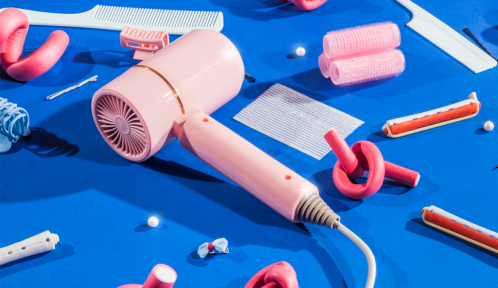Do I Need a Terrycloth Pillowcase? Dermatologists and Hairstylists Weigh In
Dermatologists and hair stylists weigh in on the benefits, downsides, and overall efficacy of terrycloth pillowcases.

As a beauty editor, I’m faced with a never-ending stream of products. Some of them, like the Dyson Airstrait, leave me wondering how I ever managed without them. Others, on the other hand, sound too good to be true—almost like something out of a science fiction novel. When it comes to trying out these products, the most crucial question is: Do they actually work? (And do the experts in the field agree?)
Experts in This Article
Recently, I stumbled upon a terrycloth pillowcase that piqued my interest enough to reach out to some trusted dermatologists and hairstylists. (Some people have takeout on speed dial, but I have the experts). Read on to discover whether or not a terrycloth pillowcase is the product that will “change your life,” or at the very least, improve your hair and skin.
What is a terrycloth pillowcase?
As the name suggests, a terrycloth pillowcase is a pillowcase made with terrycloth. The idea behind using such an absorbent fabric is to allow you to sleep comfortably with wet hair without worrying about dampening your pillow, thereby reducing the risk of bacteria and mold growth, while also allowing your hair to dry as you rest. These towel pillows are also an excellent choice for individuals who sleep with deep-conditioning masks or oil in their hair. (Trust me, no one wants the lingering scent of oil on their pillowcase.)
Are there any hair care benefits?
According to a popular terrycloth pillowcase brand, one of the main benefits of using a terrycloth pillowcase is its ability to absorb moisture from wet hair overnight, thus eliminating the need for damaging heat-styling tools. However, Wendy Iles, a renowned celebrity editorial stylist and founder of ILES FORMULA, points out that the loose weave and thick fibers of terrycloth fabric—while excellent for drying the body—can increase friction on the hair, resulting in tangles, frizz, and split ends. “Terrycloth is highly absorbent and can draw moisture and natural oils away from the hair, leading to dry and brittle hair,” she adds. For the purpose of drying fine and delicate hair, Iles suggests opting for a microfiber alternative instead. Microfiber towels are crafted from fine fibers tightly woven together, offering excellent absorption for drying hair.
Iles strongly advises against sleeping with wet hair altogether. “Not only is wet hair more prone to breakage and damage,” she says, “but the damp and warm environment is also unhealthy for the scalp.”
“I would recommend using terrycloth as a fabric specifically for drying the body only.” —Wendy Iles
When it comes to pillowcases, Iles suggests using a silk pillowcase for sleeping. “The texture of silk fabric reduces friction and minimizes hair breakage,” she says. “Silk is also breathable, allowing for natural heat and moisture circulation during sleep.” In addition, silk is a hypoallergenic fabric, naturally repelling dust mites and other allergens.
Are there any skin-care benefits?
Okay, but can a terrycloth pillowcase help with skin health? That’s what some brands claim, but Kseniya Kobets, MD, Director of Cosmetic Dermatology at Montefiore Advanced Care, says that there are better materials for skin and scalp when it comes to external pillowcases. For instance, silk or bamboo cotton reduce friction, thereby decreasing wrinkles and hair frizziness.
“Terrycloth is great for absorbing humidity and oils, making it an excellent material for towels and pillow protectors as it helps absorb any sweating or excess moisture during the night,” Dr. Kobets says. But when it comes to comfort, a terrycloth external pillowcase may not feel the best on the skin or scalp, potentially increasing skin friction.
Dr. Kobets also advises against sleeping with wet hair: “I would recommend drying the hair at least 50 percent or more before sleeping on it.” She explains that wet hair on the pillow can come into contact with the face and neck, potentially irritating the skin and causing breakouts, particularly if hair products have been applied. Additionally, damp materials can create an environment for yeast and bacteria to thrive, leading to potential skin issues. All in all, maybe it’s just another reason to keep using that Airstrait after the shower.
Sign Up for Our Daily Newsletter
Get all the latest in wellness, trends, food, fitness, beauty, and more delivered right to your inbox.
Got it, you've been added to our email list.










